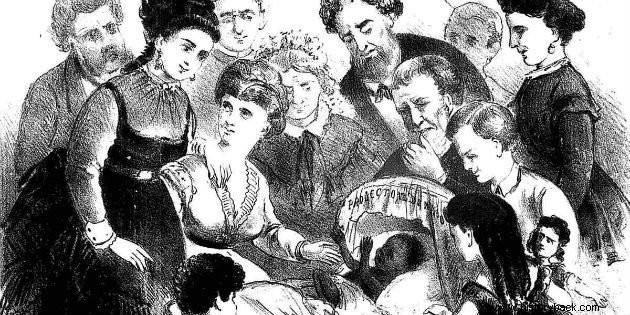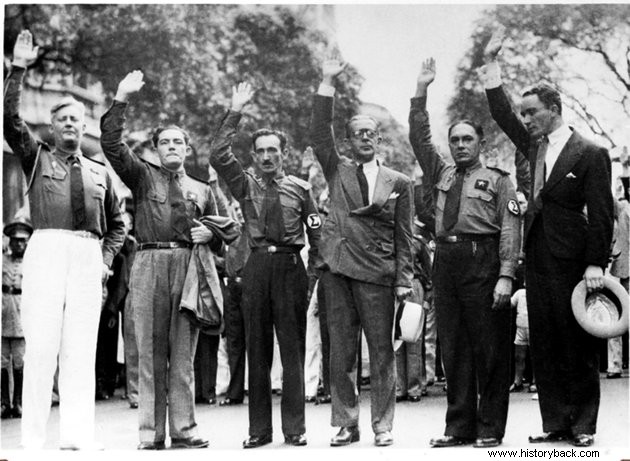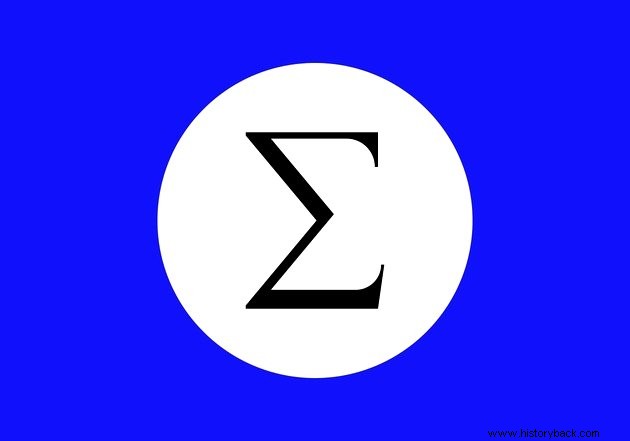The Brazilian Integralist Action (AIB) was a political organization created in 1932 by Plínio Salgado and was the first mass party in Brazil.
Initially, they supported the Vargas government. However, with the establishment of the Estado Novo (1937), they promoted the Integralist Levante, which took place on May 11, 1938, to overthrow the government.
With anti-communist and anti-liberal ideas, Integralism is considered a fascist movement in Brazil.
Summary of Brazilian Integralist Action

The Brazilian Integralist Action was founded in 1932, with the publication of the "October Manifesto" by Plínio Salgado from São Paulo.
Salgado had participated in the 1922 São Paulo Modern Art Week and was against modern art and its principles.
Self-taught, he was a journalist, elected deputy in 1928 and founded the Society for Political Studies which brought together a group of conservatives against communist ideas.
According to Plínio Salgado, human beings were destined for a higher purpose and should not be concerned only with satisfying their immediate needs. Thus, materialism and atheism should be fought.
He was elected deputy to the 1934 Constituent Assembly. He later ran for president, but this was suspended due to the 1937 Coup caused by Getúlio Vargas.
In any case, the Integralists supported the coup, as one of its members, then Army captain Olimpio Mourão Filho, wrote the Cohen Plan that would be the reason for Vargas to establish the dictatorship.
The organization hoped to be incorporated into the Vargas government, but was extinguished like all political parties in Brazil by the 1937 Constitution.
In addition to Plínio Salgado, other important members of this movement were Gustavo Barroso, Abdias Nascimento, João Cândido, Walther Moreira Salles, Magalhães Pinto, Santiago Dantas, among others.
See also:New StateCharacteristics of Integralism and AIB
In the 1930s, there was a great polarization between fascist and socialist ideas around the world. Brazil was not indifferent to this movement.
Integralism was inspired by the fascist ideas that were in force in Italy. It defended nationalism, the participation of women and blacks in politics (which was not possible in other parties), the fight against communism and liberalism.
In this way, they wanted to end the various political parties existing at the time. Instead, they proposed organic democracy.
The Brazilian Integralist Action had representations in almost all the states and were opponents of the National Liberation Alliance. They reached 500,000 to one million members.
Check out some AIB symbols below:
Greetings
“Anauê”, of Tupi origin, was the greeting of the members, which means “You are my brother”. When they said it, they raised their arms, just like European fascists.

See more at Integralism.
Motto
“God, Fatherland and Family”.
Uniform
The green shirt was the garment chosen by the AIB members, which is why they became known as green shirts and pejoratively, as "green chickens".
Symbol and Flag
The symbol of the Brazilian Integralist Action was the Greek letter sigma, which in mathematics symbolizes the sum. The pavilion was a blue square with the sigma in the center inside a white circle.

Integralist Uprising of 1938
Faced with Vargas' rejection and the end of political parties, some integralists decided to take up arms to overthrow the government.
A group headed to the Guanabara Palace, on May 11, 1938, the residence of President Getúlio Vargas, and managed to enter the gardens. Once there, they started shooting at the house where the president and his family were staying.
They were quickly overpowered and more than 1500 people were arrested. Plínio Salgado did not personally participate in this action, but he supported it ideologically. For this reason, he was sentenced to exile and headed to Portugal where the dictator Oliveira Salazar was already ruling and from where he would only return in 1946.
Keep researching this topic:
- Era Vargas
- Brazil Republic
- Constitution of 1934
- Constitutional Government
- Exercises on the Vargas Era
